Physical Address
304 North Cardinal St.
Dorchester Center, MA 02124
Physical Address
304 North Cardinal St.
Dorchester Center, MA 02124
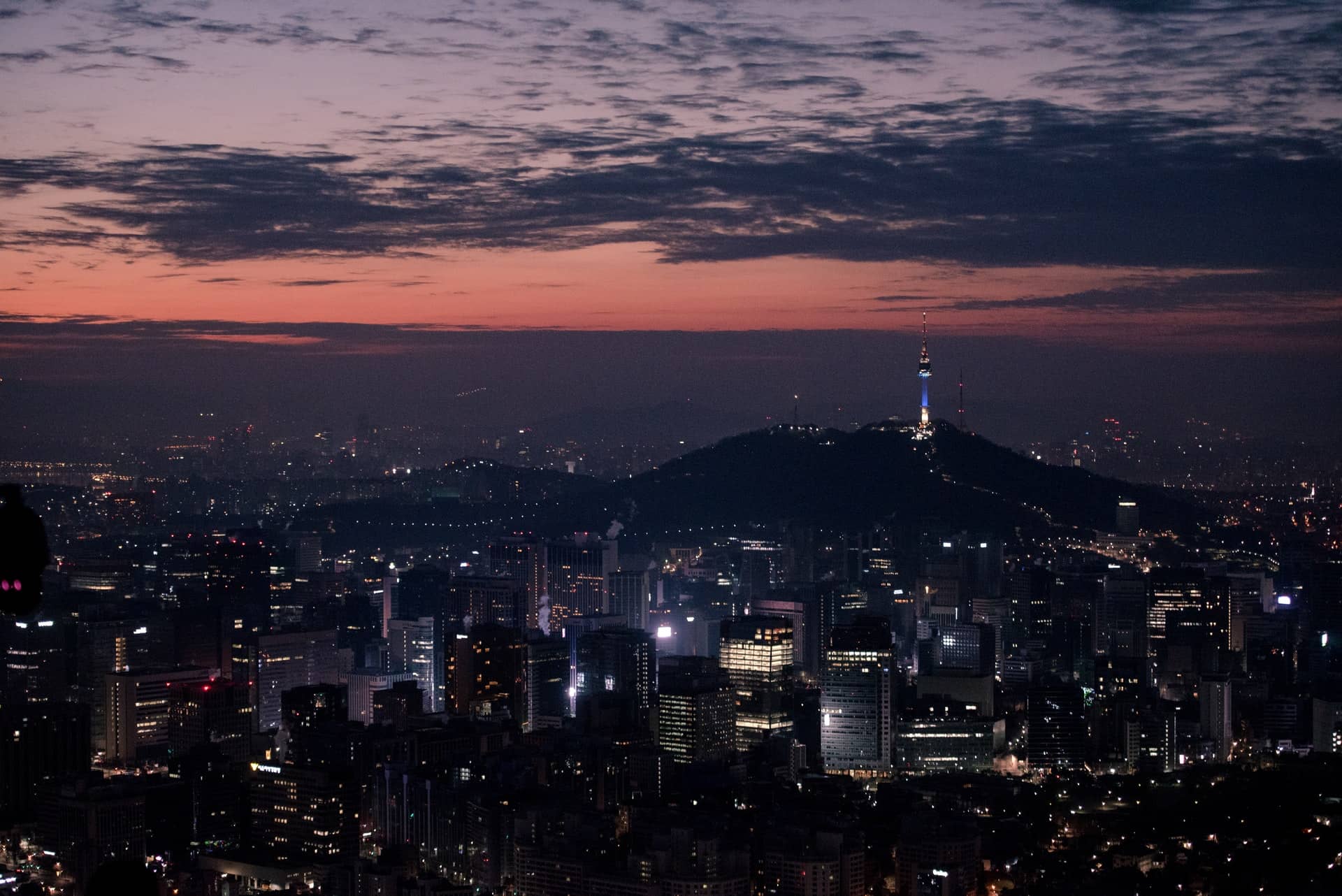
Thinking about travelling South Korea? South Korea is in a state of idolisation by nearly everyone these days. Some people are interested in the street food, some are addicted to the music and booming film and television industry (Parasite, Squid Game etc), but everyone can agree that the beauty of South Korea is unparalleled.
Are you ready to explore the Land of the Morning Calm? Whether you’re a first-time traveler or an experienced globetrotter, South Korea is bursting with culture and natural wonders. From ancient temples and charming tea houses to modern art galleries (along with great street art) and vibrant nightlife, there is something for everyone in this East Asian country. To make sure you don’t miss out on any of these wonderful experiences, we’ve put together the ultimate guide to travelling South Korea. Read on for tips on where to go, what to eat, and how to experience the best of this beautiful country!
Because of the current COVID-19 Pandemic, all foreign nationals entering South Korea must present a negative PCR test certificate. The test must have been completed within 48 hours before leaving. You should go through the material on the website of the Embassy of the Republic of Korea in London. Even if you have recently recovered from COVID-19, you must still have a negative COVID-19 test result as mentioned above before flying to South Korea.
According to the Korean government’s entrance regulations, British citizens looking at travelling South Korea can enter as tourists for up to 90 days without a visa, albeit they should be aware of the quarantine requirements. You’ll also need a return or onward ticket. Working on a tourist visa, whether as a teacher or in any other capacity, is prohibited.
To enter without a visa, Korean Authorities say you must get a Korea Electronic Travel Authorisation (K-ETA). You have up to 24 hours before your travel to submit your K-ETA application, and it will be valid for two years from the date of approval. There is a modest fee that is non-refundable. For additional information about Visa status and to apply, go to the official K-ETA website.
South Korea is a small but vibrant country located between North Korea and Japan. It has a long and fascinating history that dates back to ancient times, and is known for its rich culture, traditional customs, and modern technology.
Its capital city, Seoul, is a bustling metropolis where visitors can experience the best of both worlds—the hustle and bustle of city life in the heart of the city, while still being able to escape to more peaceful suburban areas. South Korea also boasts stunning natural beauty, from lush mountains and forests to beaches and islands. Whether you’re looking for a relaxing vacation or an adventure-filled getaway, South Korea has something for everyone.
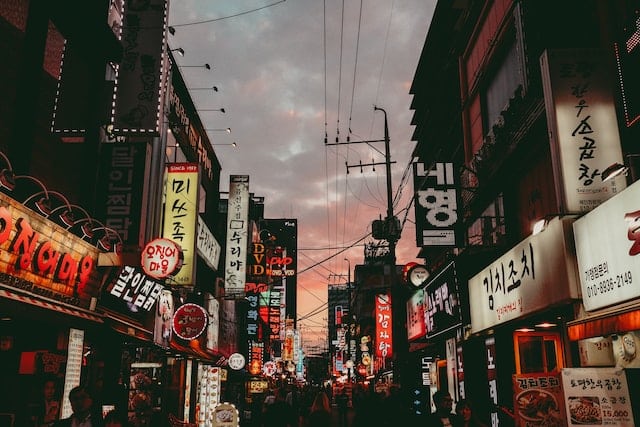
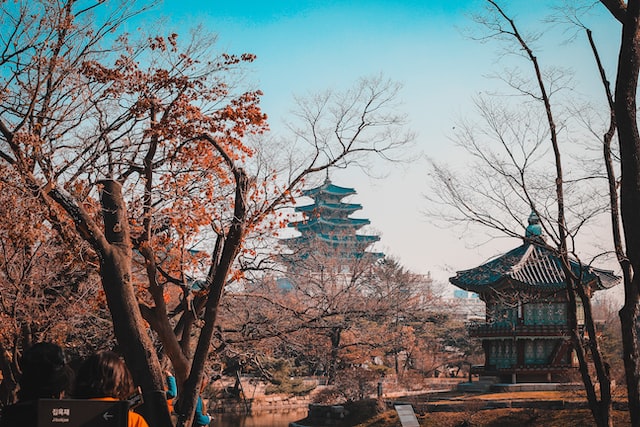
With four distinct seasons, including hot summers and chilly winters, it’s the perfect place to explore during the colorful and breathtaking spring and autumn. You’ll be thrilled to discover the unique culture, blending traditional values and modern popular culture, like K-pop, fashion, beauty and technology. Whether you’re fluent in Korean or not, you’ll be able to easily communicate in English in tourist areas and use the South Korean won (KRW) to indulge in the delicious and varied cuisine. Transportation is a breeze with the excellent high-speed trains, buses, and subways to help you explore the many interesting sights, including historic palaces, temples, museums, modern cities, shopping districts, and theme parks.
Don’t worry about safety since South Korea is generally a safe country with low crime rates. Just make sure to be courteous and follow local customs like removing your shoes before entering someone’s home or a traditional restaurant, and bowing when greeting someone. You’re guaranteed to have a fantastic time travelling South Korea – a destination full of rich culture, delicious food, and endless excitement!
Understanding and respecting local customs can greatly enhance your travel experience in South Korea. When meeting someone, a slight bow or a handshake is appropriate. Lowering your eyes slightly as a sign of respect is common. Hierarchy is important, so when addressing someone, using titles like Manager Kim instead of just a first name is the norm.
Dining etiquette includes waiting for the eldest to begin eating before starting your meal. Leaving rice grains untouched is seen as wasteful, and it’s polite to lift your bowl closer to your mouth when eating soups or stews. Sharing food is also customary, and you might find Korean meals are communal, featuring shared dishes at the centre.
Shoes should be removed before entering homes and certain traditional accommodations, like hanoks or some guesthouses, with slippers provided instead. Public displays of affection are uncommon, though South Korea is generally a safe and friendly place to get around as a visitor, with locals often willing to assist when asked politely.
Engaging with South Koreans involves understanding their nuanced communication style, which tends to be indirect compared to Western standards. Politeness is key, and it’s common to hear how people use a soft-spoken manner to convey respect. Raising one’s voice or overtly displaying impatience in public can be perceived negatively. Harmony and group consensus are preferred, often leading individuals to agree publicly and reserve differing opinions for private discussions.
Gift-giving is an art in Korea and holds cultural significance. If invited to a Korean home, it’s customary to bring a small gift, typically a box of traditional sweets or fresh fruits, to express gratitude. When exchanging gifts, they are presented and received with two hands, accompanied by a slight bow. It’s also customary to refuse a gift once or twice before accepting it graciously, showing respect and humility.
Respect for elders is a fundamental aspect of Korean society, deeply rooted in Confucian principles. Younger individuals are expected to show deference through language and gestures. When sitting at a table, wait for elders to take their seats before sitting down, and pour drinks for those older or higher ranking before oneself. This practice is a reflection of the harmony and respect commonly seen in daily interactions.
Similarly, collectivism plays a significant role in workplace dynamics, where achievements are attributed to group success rather than individual brilliance. Understanding this mindset is beneficial when engaging in business or collaborative efforts, as it emphasises the importance of teamwork and harmony over competition.
In public spaces, it’s common to observe that the volume of conversations is generally kept low and composed, reflecting a societal preference for reserved and considerate public interactions. As digital connectivity permeates social settings, showing attentiveness by fully engaging and putting away mobile devices when in conversation is a sign of respect and consideration in South Korea.
South Korea offers a highly efficient and reliable transportation system, perfect for exploring both rural and urban areas. The Seoul subway network is extensive, acting as the backbone for city commuting. It is often considered one of the most efficient in the world, operating from early morning until late evening, with signage in Korean, English, and often Chinese and Japanese.
For intercity travel, the Korea Train Express (KTX) is the high-speed rail option, connecting major cities quickly and comfortably. Travellers can expect clean and punctual service with speeds reaching up to 305 km/h. For travel convenience, purchasing a T-money card is recommended, as it can be used on subways, buses, taxis, and even some convenience stores throughout the country, saving both time and money.
Public buses provide another popular choice, offering comprehensive routes reaching even the more remote regions. Long-distance buses, especially those departing from Seoul’s Express Bus Terminal, provide comfort with reclining seats and air conditioning, perfect for longer journeys. Taxis are abundant in cities and are convenient, although slightly more expensive for longer trips. It’s important to have your destination written in Korean, as not all drivers speak English.
Travelling between South Korea’s cities and provinces is made seamless by a well-structured network of transportation options. For visitors who plan to tour the country, the KTX offers speed and comfort, linking major cities like Seoul, Busan, and Daejeon. Tickets can be purchased online or at train stations, with discounts available for tourists through the KR Pass.
Domestic air travel is also possible, especially convenient for trips to Jeju Island. Korean Air and Asiana Airlines are the leading carriers providing frequent flights. For those preferring roads, car rental services are accessible and roads are well-marked; however, driving in urban centres can be challenging due to congestion.
The use of international driving permits and understanding Korean road signs are necessary. Travelling through the streets and highways, especially during rush hour, requires patience, but offers a unique perspective of the country. Travellers are encouraged to experience the efficiency of public transport while taking in South Korea’s expansive natural landscapes and urban life.
For a uniquely immersive experience, hopping on one of South Korea’s domestic ferry services can be a serene way to witness the country’s coastal beauty. Ferry travel is particularly popular when heading to the more remote islands, like Ulleungdo or Bijindo, each offering a slice of tranquillity away from bustling city life. These services are generally reliable, with frequent routes connecting smaller island communities to the mainland.
Bicycles provide another eco-friendly way to explore South Korea, with dedicated paths covering large sections of the countryside such as the Han River trails or routes through the scenic landscapes of Jeju Island. National bike paths are well-kept, equipped with rest areas, and often provide insights into traditional village life that might otherwise be missed. Renting a bike can be done easily near these paths or within city centres, offering both fitness and leisurely exploration.
Should travellers prefer a more personal touch, South Korea offers a thriving rideshare community through various apps, a practical method to mix exploration with convenience. Whether exploring the countryside or zipping between cultural sites in the city, transportation in South Korea presents options that cater to all travel styles and preferences.
South Korea has a long and fascinating history. The earliest evidence of human habitation in the area dates back over 10,000 years, and pottery and agriculture only began to develop around 3000 BCE.
Gojoseon, one of the earliest known Korean kingdoms, is reputed to have been established in 2333 BCE by the legendary character Dangun. While some historians hold the opinion that Gojoseon was only a mythical kingdom, others argue that there is evidence to support its existence, including ancient artefacts and Chinese records. Gojoseon is thought to have persisted until the Han dynasty of China conquered it in 108 BCE.
The Korean Peninsula was divided into a number of small states after Gojoseon fell, including Goguryeo, Baekje, and Silla. These kingdoms, which first appeared in the first century BCE, frequently fought one another as well as their nearby neighbours China and Japan.
The largest and most powerful of the three kingdoms was Goguryeo, which was situated in the northern section of the peninsula. Its armies frequently engaged in battle with those of the Han dynasty due to its reputation for military prowess. The southwest-located Baekje kingdom was renowned for its sophisticated culture and fine art, which included exquisite pottery and Buddhist sculptures. The small state of Silla, which is in the southeast, eventually grew to be the most powerful of the three kingdoms. Silla was renowned for its affluent nobility and its expertise in iron-making technology.
The Silla kingdom unified the Korean Peninsula under its rule in 668 CE after defeating the other two kingdoms. Until the Goryeo dynasty overthrew it in 935 CE, the Silla dynasty reigned in Korea. The famous Tripitaka Koreana, a collection of wooden blocks with Buddhist texts engraved on them, was made during the Goryeo dynasty, which ruled until 1392 CE.
The Joseon dynasty was established in 1392 CE and lasted until 1910 CE, when Japan annexed Korea. The Joseon dynasty is renowned for its cultural accomplishments, which include the development of Confucianism, the invention of the Korean alphabet (Hangul), and the building of stunning temples and palaces.
The resilient and inventive nature of the Korean people are demonstrated by South Korea’s ancient history. The region has produced a rich and varied culture, including stunning art, cutting-edge technology, and strong kingdoms that have left their mark on the world, despite frequent warfare and political upheaval. Travelling South Korea is a great decision for any tourist or budding historian!
Depending on your interests and what you want to do and see, there is no one best time to consider travelling South Korea, but the best seasons to travel are typically spring (March to May) and fall (September to November), which feature mild temperatures, clear skies, and stunning scenery. In the spring, when the cherry blossoms are in full bloom, the country is covered in a stunning pink and white landscape. The mountains and forests become a riot of red, yellow, and orange hues in the autumn as the leaves change colour.
The busiest travel season is summer (June to August), which is marked by hot and muggy conditions, particularly in urban areas. But if you enjoy the beach, now is the ideal time to visit some of South Korea’s stunning beaches, such as Haeundae Beach in Busan and Jeju Island. Both locals and visitors enjoy the beaches, where you can go swimming, sunbathe, and engage in water sports.
Winter (December to February) can be chilly, with some regions of the nation experiencing below-freezing temperatures. However, now is a fantastic time to visit the ski resorts in South Korea, including the world-class Yongpyong Ski Resort and High1 Resort.
Depending on the time of year and location, South Korea experiences varying temperatures. In the cities, summertime highs can reach 25°C to 35°C (77°F to 95°F), while in the mountains, wintertime lows can reach -10°C to 0°C (14°F to 32°F) or lower. Generally speaking, the southern part of the nation experiences more heat and humidity than the northern part.
Rainfall in South Korea averages 1000mm annually, with the rainy season falling in late June and early July. During this time, there may be days where it rains a lot, causing some areas to flood and experience landslides. On the other hand, the rain frequently stops quickly, leaving behind clean, fresh air and clear skies.
The time of sunset varies throughout the year in South Korea. The sun sets around 7 p.m. in the summer and as early as 5 p.m. in the winter. The sun sets at around 6 p.m. during the spring and autumn, when the sunset times are more evenly distributed.
Overall, South Korea is a fantastic place to travel all year long, with each season having its own special charms. There is always something to see and do while travelling South Korea, whether you’re exploring the energetic cities, unwinding on the beaches, or hiking through the breathtaking national parks.
South Korea is a land of stunning natural beauty, vibrant cities, and fascinating attractions that can keep traveler’s busy for weeks. South Korea is a vibrant and diverse country that offers a wide range of cultural, historical, and natural attractions. Here are the top things to see and do in South Korea:
These are just some of the many things to see and do whilst travelling South Korea. Whether you’re interested in history, culture, nature, or food, there’s something for everyone in this fascinating country.
Travelling on a budget in South Korea doesn’t have to be difficult. Accommodation options range from budget to high-end, and transport, eating out, drinks and tourist attractions are all relatively affordable.
South Korea is a fascinating country to visit, but it can also be expensive. However, there are plenty of ways to travel to South Korea on a budget. Here are some budget travel tips for South Korea:
One way to save money on your trip to South Korea is to bring a reusable water bottle. Tap water is safe to drink in South Korea, so you can refill your bottle at restaurants, cafes, and public water fountains instead of buying bottled water, which can be expensive.
Another budget travel tip is to take advantage of the free WiFi available. While travelling South Korea, you’ll notice the WiFi in many public places. Airports, subway stations, and tourist attractions often offer free Wi-Fi, so you can stay connected without using up your data or incurring roaming charges.
If you’re interested in shopping, consider visiting the many vibrant markets in South Korea. These markets offer a wide range of products, from traditional handicrafts to trendy fashion, at affordable prices. Shopping at markets can be much cheaper than shopping in malls or department stores.
Another way to save money on your trip to South Korea is to join free walking tours. Many cities in South Korea offer free walking tours, led by local volunteers. These tours are a great way to explore the city, learn about its history and culture, and meet other travelers.
Finally, consider using discount passes to save money on transportation, attractions, and food. There are many discount passes available for tourists in South Korea, such as the Seoul City Pass and the Korea Tour Card. These passes offer discounts on public transportation, admission fees to attractions, and discounts at select restaurants and stores.
These are just some of the many ways of travelling South Korea on a budget. With a little planning and creativity, you can enjoy all that this fascinating country has to offer without breaking the bank.
No visit to South Korea is complete or even starts without a stop in its vibrant capital. Seoul is a city that’s constantly evolving, and it’s never been more exciting to visit. Once known primarily as an industrial hub, Seoul has undergone a cultural transformation in recent years. Today, the city is a hub of art, design, and culture, with a focus on aesthetics and quality of life.
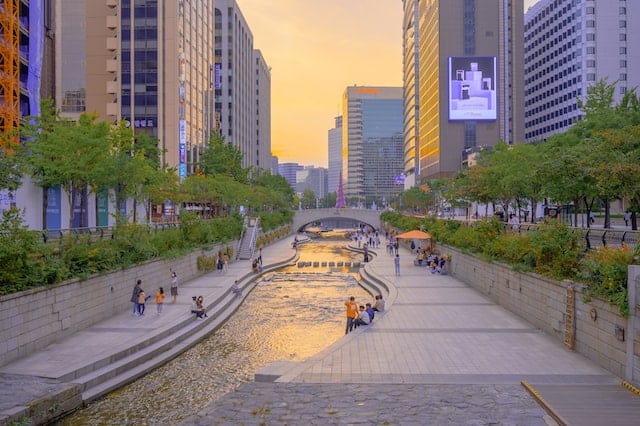
One of the most exciting changes in Seoul is the abundance of green spaces. Industrial areas have been transformed into beautiful parks, and there are now plenty of cycling routes throughout the city. It’s a great way to experience Seoul’s natural beauty while getting some exercise.
Cultural attractions are also thriving in Seoul. The city has a vibrant modern art scene, with plenty of galleries and exhibitions to explore. There’s also a wide range of music venues, from indie clubs to grand concert halls, and world-class museums like the National Museum of Korea.
But despite all the modernity, Seoul has not forgotten its rich history and traditions. The city is home to 14th-century palaces, wooden hanok houses, and jjimjilbang bathhouses that are a must-see for any visitor.
And of course, there’s plenty of fun to be had in Seoul. From the lively night markets to the fashionable restaurants and bars, there’s something for everyone. And if you’re feeling brave, why not belt out a tune at a karaoke den?
All of this is easily accessible thanks to Seoul’s efficient public transportation network. Whether you’re taking the subway or the bus, getting around Seoul is a breeze.
In short, Seoul is a city that’s bursting with life, energy, and culture. There’s so much to see and do, and it’s all wrapped up in one of the most efficient and accessible cities in the world. There really isn’t a reason to not visit Seoul whilst travelling South Korea!
If you’re planning a trip to Seoul, here’s what you can expect:
Overall, Seoul is a vibrant city with a unique blend of old and new, tradition and modernity. With plenty of sights to see, food to try, and places to shop and drink, there’s something for everyone in this dynamic city.
Oh, the southern coast of Korea is truly a wonder to behold! This region is steeped in history, and it’s where the legendary Admiral Yi Sun-shin defeated multiple Japanese invasion fleets with his revolutionary turtle ships. And today, it’s a sun-soaked paradise that draws in visitors from all over the world.
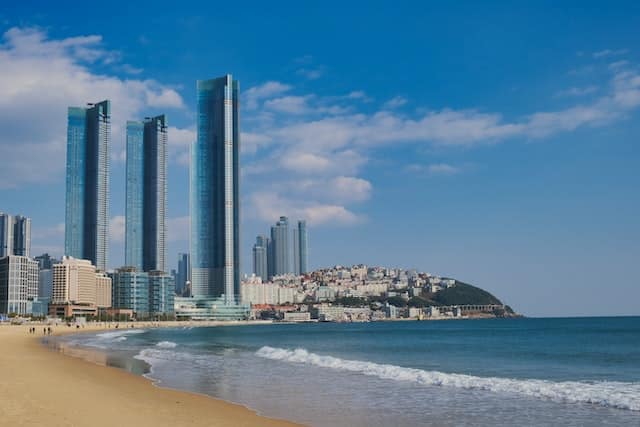
The jewel in the crown of the southern coast is Busan (don’t worry, all the zombies have gone!), South Korea’s second city. This vibrant metropolis has a rich history and a more laid-back vibe than the capital. Its traditional markets are a feast for the senses, while the quirky Gamcheon art district is a must-visit for anyone who loves street art. And of course, the beaches are the perfect place to soak up the sun and enjoy some fun in the water.
But Busan is just the beginning. The southern coast is also home to several small towns and cities that are well worth exploring. The hiking trails of Geoje Island offer stunning views of the coastline, while the tea plantations of Boseong are a must-visit for anyone who loves a good cuppa. And Hadong County’s natural beauty will leave you breathless with awe.
Yes, these hidden gems may be a bit harder to reach, but the intrepid traveler will find them well worth the effort. From stunning scenery to charming towns, the southern coast of Korea has it all. So why not add it to your travelling South Korean itinerary?
Overall, Busan and the South Coast offer a unique perspective on South Korea, with beautiful coastal views, delicious seafood, and plenty of historic sites and cultural experiences. Whether you’re looking for relaxation or adventure, you’re sure to find it in this stunning part of the country.
Jeju Island is a must-see destination for any visitor looking at travelling South Korea. With its stunning volcanic landscape, stunning beaches and emerald sea, there’s something for everyone to enjoy. From hiking its many trails to relaxing on its stunning beaches, Jeju Island is sure to make your trip memorable.
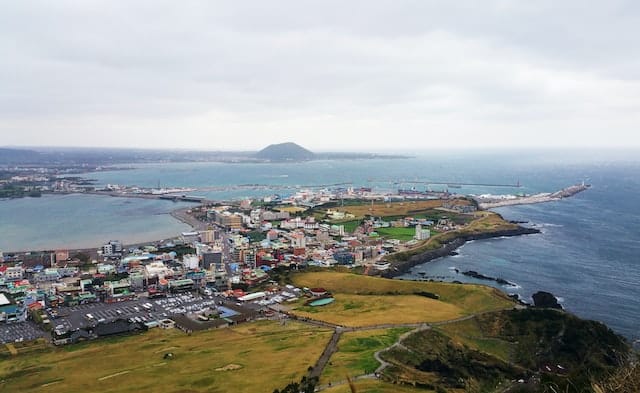
Jeju Island offers more than just beautiful scenery; it’s an adventure seeker’s paradise. The Manjanggul Lava Tube, one of the longest in the world, reveals fascinating rock formations including lava stalactites and stalagmites, a remarkable proof of Jeju’s volcanic origins.
Nature enthusiasts will delight in the island’s Olle Hiking Trails, which meander through coastal and inland paths, offering stunning views and glimpses of Jeju’s unique flora. Each trail presents a new facet of the island’s beauty, from lush canopies to rugged sea cliffs.
Staying in a hanok offers a traditional experience, providing an authentic look into Korean architecture and lifestyle. Incorporating elements of ondol, these guesthouses use natural elements and traditional building techniques, effortlessly blending into the island’s natural environment.
Jeju’s UNESCO World Heritage Sites, including Seongsan Ilchulbong Peak and Hallasan Mountain, are also significant for their natural beauty and ecological importance, making them must-visit locations for those exploring the island.
You can also indulge in some of the island’s traditional activities such as free diving with the octogenarians or visit Hyeopjae Beach, one of the top rated beaches on Jeju Island.
Overall, Jeju Island is a beautiful and unique destination that offers a glimpse into Korean culture and natural beauty. Whether you’re looking to explore historic sites, taste delicious cuisine, or just relax on the beach, Jeju Island has something for everyone. Whatever you decide to do, make sure you take in all that this beautiful island has to offer and make your visit to South Korea an unforgettable one!
The DMZ is an essential part of any South Korean experience and a must-see for any visitor travelling South Korea. Located between North and South Korea, the Demilitarised Zone is a historical location that can be explored with a registered guide or tour company.
The DMZ is a 250-kilometer-long strip of land that separates North and South Korea. It is one of the most heavily guarded borders in the world and is home to a number of military installations and checkpoints.
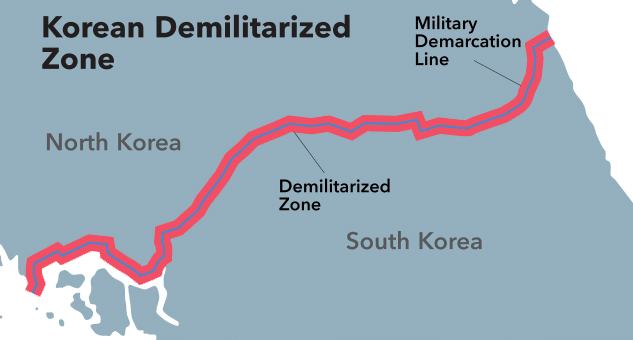
Despite its name, the DMZ is anything but demilitarized, and it remains a powerful symbol of the ongoing conflict between the two Koreas. Visiting the DMZ is an unforgettable experience, and here’s what you can expect.
The DMZ was established in 1953, following the end of the Korean War. It was created as a buffer zone between North and South Korea and was designed to prevent further conflict between the two sides. The DMZ is 4 kilometres wide and extends from the east coast to the west coast of the Korean Peninsula.
The DMZ tour is a popular activity for visitors to South Korea. There are several companies that offer DMZ tours, and they typically last for a full day. The tour includes a visit to the Joint Security Area (JSA), which is the only place where visitors can actually step into North Korea.
The Joint Security Area is located in the village of Panmunjom, and it is the only place where visitors can actually step into North Korea. The JSA is a small area that is jointly controlled by North and South Korea and is home to a number of military installations and checkpoints.
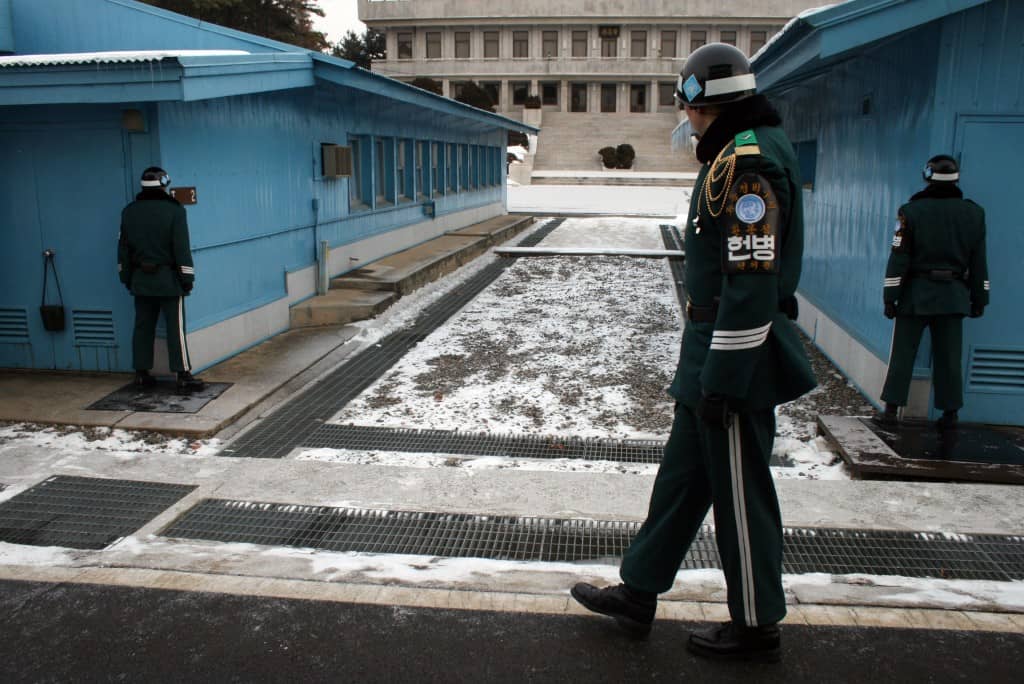
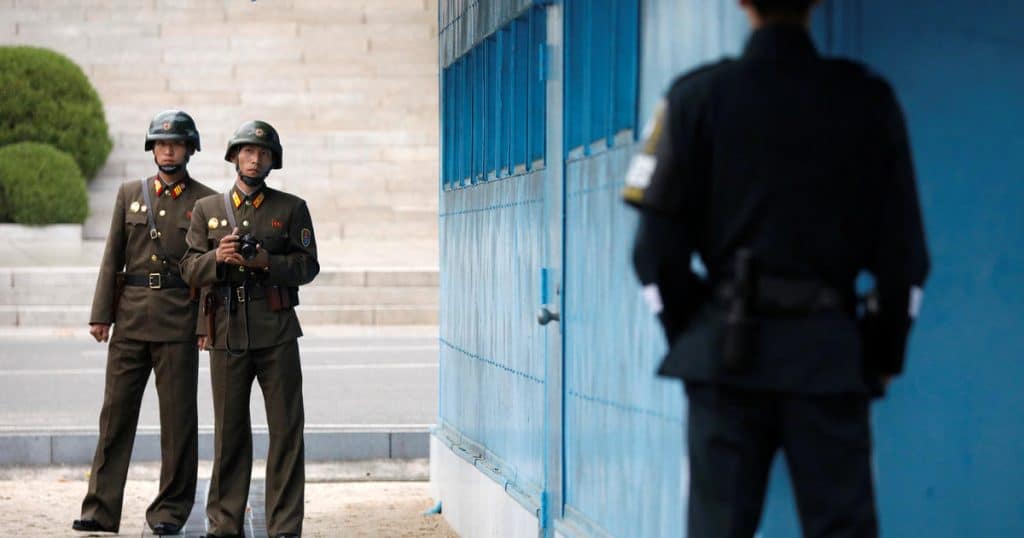
Visitors to the JSA are taken on a guided tour and are allowed to step across the Military Demarcation Line (MDL), which marks the border between North and South Korea. While in the JSA, visitors can see the famous blue buildings that straddle the border and are used for negotiations between the two Koreas. They can also observe the North Korean soldiers on the other side of the border.
The Third Tunnel is one of the four known tunnels that North Korea dug under the DMZ in an attempt to invade South Korea. The tunnel was discovered in 1978, and it is 1.6 kilometers long and 2 meters wide. It is estimated that the tunnel could accommodate up to 30,000 soldiers per hour.
Visitors to the DMZ can take a tour of the Third Tunnel, which includes a walk down a steep incline and through the narrow tunnel. While inside the tunnel, visitors can see evidence of the dynamite used to create the tunnel and the drills used to dig it out.
The Dora Observatory is located on top of Mount Dora, and it offers a panoramic view of the DMZ and North Korea. Visitors to the observatory can use binoculars to see the North Korean city of Kaesong and the nearby propaganda village of Gijeong-dong.
The Dora Observatory is also home to a peace bell that visitors can ring as a symbol of their hope for peace between the two Koreas.
Imjingak Park is located near the DMZ, and it is a popular destination for visitors to the area. The park is home to a number of monuments and memorials, including the Freedom Bridge, which was used by prisoners of war to return home after the Korean War.
Visitors to Imjingak Park can also see a number of artifacts and displays related to the Korean War and the ongoing conflict between North and South Korea.
When taking a DMZ tour, visitors should expect to go through several security checkpoints and be subject to strict rules and regulations. Visitors are not allowed to take photos of North Korean soldiers or military installations and must follow their guide’s instructions at all times.
The tour typically includes transportation to and from the DMZ, as well as a guided tour of the various sites. Visitors should be prepared for a long day, as the tour can take up to 8 hours.
It’s important to note that the DMZ is still an active military zone and is subject to sudden closures or cancellations due to political tensions or military exercises. Visitors should check with their tour company before booking to ensure that the DMZ will be open during their visit.
In addition, visitors should dress appropriately for the weather and wear comfortable shoes, as the tour involves a fair amount of walking and standing.
Visiting the DMZ is a unique and unforgettable experience that offers a glimpse into one of the world’s most volatile conflicts. While the tour may be intense and emotionally charged, it provides a valuable opportunity to learn about the history and current state of affairs between North and South Korea.
Whether you’re interested in history, politics, or simply want to see a part of the world that few have experienced, the DMZ tour is an experience that should not be missed. So if you’re planning a trip to South Korea, consider adding the DMZ to your itinerary and prepare for an unforgettable adventure.
South Korea is home to some of the most stunning national parks in the world. South Korea is a country of stunning natural beauty, and nowhere is this more apparent than in its national parks.
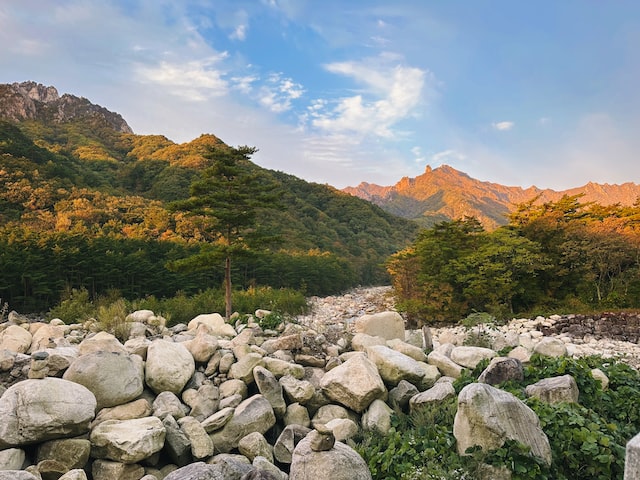
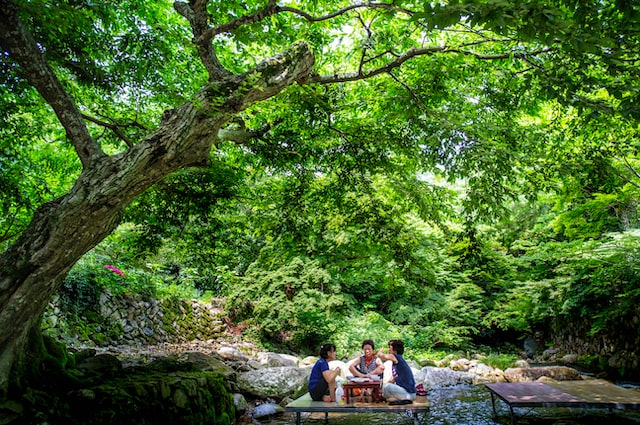
With 22 national parks covering more than 6,000 square kilometers of land, there is no shortage of opportunities for visitors to hike and explore South Koreas forests and woodlands.
Here are some of the most beautiful national parks in South Korea:
In addition to these national parks, South Korea is also home to several other beautiful natural areas, including the Jeju Olle Trail, which is a network of hiking trails that circumnavigate Jeju Island.
Visitors to South Korea’s national parks should be prepared for a variety of weather conditions, depending on the time of year. The summer months can be hot and humid, while the winter months can be cold and snowy. Visitors should dress appropriately for the weather and wear comfortable shoes for hiking.
Visitors should be aware of the park’s rules and regulations, which are designed to protect the natural environment. Visitors should not litter or damage the park’s flora or fauna, and should follow any signage or instructions from park rangers.
When it comes to finding accommodation in South Korea, there is no shortage of options. From quaint traditional houses to glinting skyscrapers, the South Korean capital is a whirl of sights, bites and late nights. Where you choose to stay will depend on your budget, travel style, and the specific attractions you plan to visit. Here are a few places that offer a large range of accommodation;
Seoul, the capital city of South Korea, offers a wide range of accommodation options to suit every budget. For budget travelers, there are several hostels and guesthouses located in popular areas like Myeong-dong and Hongdae.
For those looking for something more luxurious, there are several five-star hotels located throughout the city, including the Lotte Hotel and the Grand Hyatt Seoul. Many of these hotels offer stunning views of the city skyline and are located in popular areas like Gangnam and Itaewon.
Jeju Island, located off the southern coast of South Korea, is a popular destination for both domestic and international tourists. The island is known for its stunning natural beauty and offers a wide range of accommodation options, from budget-friendly guesthouses to luxurious resorts.
For budget travelers, there are several hostels and guesthouses located in popular areas like Jeju City and Seogwipo. For those looking for something more luxurious, there are several five-star hotels located throughout the island, including the Shilla Jeju and the Lotte Hotel Jeju.
Busan, located in the south of South Korea, is the country’s second-largest city and a popular destination for beachgoers. The city offers a wide range of accommodation options, from budget-friendly hostels to luxurious five-star hotels.
For budget travelers, there are several hostels and guesthouses located in popular areas like Haeundae and Seomyeon. For those looking for something more luxurious, there are several five-star hotels located throughout the city, including the Park Hyatt Busan and the Lotte Hotel Busan.
Gyeongju, located in the southeast of South Korea, is a popular destination for those interested in history and culture. The city was once the capital of the Silla Dynasty and is home to several UNESCO World Heritage sites.
For budget travelers, there are several guesthouses and homestays located in popular areas like Bomun Lake and Bulguksa Temple. For those looking for something more luxurious, there are several five-star hotels located throughout the city, including the Hilton Gyeongju and the Hanwha Resort Gyeongju.
Overall, South Korea offers a wide range of accommodation options to suit every budget and travel style. Whether you’re looking for a budget-friendly hostel or a luxurious five-star hotel, there are plenty of options available throughout the country. When choosing where to stay, consider the specific attractions you plan to visit and choose a location that is convenient and offers easy access to the things you want to see and do.
Shopping in South Korea is an amazing experience. From the bustling underground malls of Seoul’s metro stations to the late-night shopping in Dongdaemun, there’s no shortage of exciting places to explore. Insadong is a popular destination for souvenirs, accessories, stationery, and antiques.
And of course, there’s the glinting technology in the shopping districts that offer a unique cultural experience. Whether you’re looking for a bargain or designer labels, South Korea has something for everyone. Be sure to take advantage of the vibrant culture and explore all that this incredible country has to offer. Some of that best South Korean shopping hotspots include;
South Korea is renowned for its extensive selection of skincare and beauty products. Cosmetic brands such as Innisfree, Etude House, and Laneige offer innovative products known worldwide for their quality and innovation. Korean beauty products focus on skincare, with sheet masks, serums, and BB creams being particularly popular among tourists.
Traditional crafts like hanji, or Korean paper, offer a window into Korea’s past. This paper is well-regarded for its strength and versatility, used in arts, wrapping, and illumination in lamps. Namdaemun Market in Seoul and Insadong are excellent places to explore these products.
Tech enthusiasts will enjoy Yongsan Electronics Market in Seoul, a hub for electronics, where you can find everything from the newest gadgets to accessories, often at competitive prices. Whether you’re into the latest phone technology or exploring traditional crafts, South Korea offers a shopping experience that satisfies all kinds of interests.
Not all treasures in South Korea are found on store shelves. Localised markets across the country brim with unusual finds, from handmade jewellery by local artisans in Insa-dong to exotic varieties of kimchi only found in regional towns. The Icheon Ceramics Village is perfect for those interested in traditional Korean pottery, offering workshops where you can create your own piece.
High-tech enthusiasts can explore the sprawling Digital Media City in Seoul, a futuristic hub hosting cutting-edge technology companies and interactive showcases of the latest digital advancements. From virtual reality experiences to high-definition theatres, this area showcases modern Korean innovation and is accessible via a quick subway ride from Seoul’s centre.
In Paju’s Art Village, combining shopping with culture and relaxation is ideal. It’s home to unique galleries and bookstores nestled within peaceful parks, providing a day-trip destination to leave the urban rush behind.
South Korea’s markets also feature a variety of locally produced teas, distinct in flavour and aroma. Daehan Dawon on Boseong Tea Plantation is a must-visit for tea aficionados seeking authentic Korean green tea, known for its subtle sweetness and beautiful colour. Visitors can enjoy the serene beauty of endless green fields and gain insights during tea-tasting sessions gracefully paired with traditional snacks.
Art-lovers will appreciate eye-catching art galleries tucked within Seoul’s creative Itaewon district or Busan’s Gwangalli, featuring eclectic collections from emerging Korean artists. These areas highlight Korea’s emphasis on artistic expression, providing unique opportunities to purchase modern art pieces or crafted souvenirs that are not mass-produced.
For luxury seekers, duty-free shopping outlets such as Lotte Duty Free and Shinsegae Duty Free offer premium international brands without the tax markup, ideal spots to indulge in designer shopping while ensuring value.
Whether searching for authenticity or luxury, South Korean shopping destinations offer a rich assortment matching every budget and taste.
South Korea is a nation with a long history, a vibrant culture, and a rich tradition. South Korea offers a diverse range of cultural experiences for travellers to explore, from its historic palaces and temples to its contemporary K-Pop music and fashion.
There are many ways to become fully immersed in Korean culture and make priceless memories, whether your interests are traditional Korean cuisine or learning about the history and customs of the nation. This section will discuss some of the top cultural activities that South Korea has to offer, including going to historical sites and participating in local festivals and events. There is always something fresh and exciting to discover in South Korea, whether you’re a frequent traveller or a first-time visitor.
If you’re a fan of K-Pop, then South Korea is the ultimate destination for you! Get ready to live your wildest dreams by visiting popular music studios like SM Entertainment and JYP Entertainment, where you can see your favourite idols rehearsing and recording music.
If you’re a K-Pop fan, there’s no better place to experience the excitement and energy of this genre of music than in Seoul, the birthplace of K-Pop. Here are some things that K-Pop fans can experience when travelling South Korea and Seoul.
Visit a K-Pop Studio – One of the most thrilling experiences for K-Pop fans is visiting a K-Pop studio, where you can see your favourite idols rehearsing and recording music. There are many K-Pop studios in Seoul, including SM Entertainment and JYP Entertainment, which offer tours that take visitors behind the scenes of the K-Pop industry. You can watch your favorite idols in action and even get a chance to take photos with them.
Attend a K-Pop Concert – Another must-do activity for K-Pop fans in Seoul is attending a K-Pop concert. South Korea is home to some of the biggest and most popular K-Pop acts in the world, and concerts are held regularly throughout the country. You can experience the energy and excitement of a K-Pop concert firsthand, as you sing along to your favorite songs and dance along with the crowd.
Visit K-Star Road – For a more casual K-Pop experience, visit K-Star Road in Gangnam, Seoul. This is a popular destination for K-Pop fans, as it’s lined with statues and murals of famous K-Pop idols. You can take photos with your favorite idols and browse through the nearby shops that sell K-Pop merchandise. K-Star Road is a great way to immerse yourself in the world of K-Pop and feel like a true fan.
Visit K-Pop Cafes – For K-Pop fans who want to take a break from the excitement of concerts and studio tours, there are many K-Pop cafes in Seoul where you can relax and indulge in your love of K-Pop. These cafes are themed around popular K-Pop groups like BTS and Blackpink, and they offer a cozy atmosphere where fans can enjoy a cup of coffee and chat with fellow fans.
K-Pop’s global footprint is vast, not only in music charts but also in tourism. The fame of groups like BTS and BLACKPINK has drawn thousands of fans to visit Korea annually, eager to attend concerts and fan meetings. Seoul has transformed into a pop culture hub with sites dedicated to this music genre.
Landmarks featured in music videos, like Gyeongbokgung Palace or Dongdaemun Design Plaza, are increasingly popular among fans, offering a tangible connection to their idols. Specialty stores and cafes are abundant, where visitors can purchase official merchandise or enjoy themed beverages, highlighting the cultural impact K-Pop has on Seoul’s economy and tourism landscape.
Visitors often set out on specific K-Pop tours, exploring entertainment company headquarters in Gangnam, where hopefuls audition to be part of this thriving industry. This has made K-Pop not just a musical movement but a substantial contributor to South Korea’s booming tourism industry.
Fans visiting South Korea can participate in events such as live recordings of televised K-Pop shows, providing a firsthand experience of the energy and charisma of idol performances. Venues like the MBC World and SMTOWN Coex Artium host K-Pop exhibitions featuring holograms, costumes, and themed experiences, enticing fans to step into the world of their musical idols.
K-Pop also boosts tourism in areas beyond Seoul. The rise of online fan communities has led to organized pilgrimages to locations featured in music videos, drama shoots, or significant in idol biographies. Busan, being the birthplace of some popular idols, experiences a surge in tourism related to these cultural connections, merging the love for music with regional pride.
The influence of K-Pop on tourism extends to themed cafes and restaurants, designed to attract fans with decor inspired by favourite bands and idols. Places like the BTS-themed café offer fans a space to enjoy music, band-related memorabilia, and Korean dishes while feeling closer to their idols.
Theatrical performances known as K-Pop musicals have also gained traction, bringing the music to life through storytelling and dance. These shows are popular in Seoul’s theatre districts, drawing audiences seeking an entertaining introduction to the fusion of traditional and modern Korean performing arts.
This intersection of pop culture and tourism not only stimulates economic growth but also fosters cross-cultural exchanges, allowing visitors to engage with South Korea’s modern global influence. This fascination with K-Pop reflects the broader allure of South Korea as a cultural hub in the hearts of international audiences.
The effect of this global music phenomenon continuously propels South Korea onto the world stage, reinforcing pride in its heritage and artistry while inviting fans from all walks of life to explore its vibrant cultural landscape.
Traditional South Korean dancing is an art form that has been passed down through generations for centuries. It is a reflection of Korea’s rich cultural heritage, and it offers a glimpse into the country’s traditional customs and beliefs. Korean traditional dance has a unique style that is characterized by its graceful movements, intricate footwork, and colorful costumes.
There are many different types of traditional Korean dance, each with its own unique style and history. One of the most well-known types of Korean traditional dance is the fan dance, which is performed by female dancers wearing colorful hanbok dresses and using large fans to create graceful movements. The fan dance is often performed at festivals and other cultural events, and it’s a favorite among both locals and tourists.
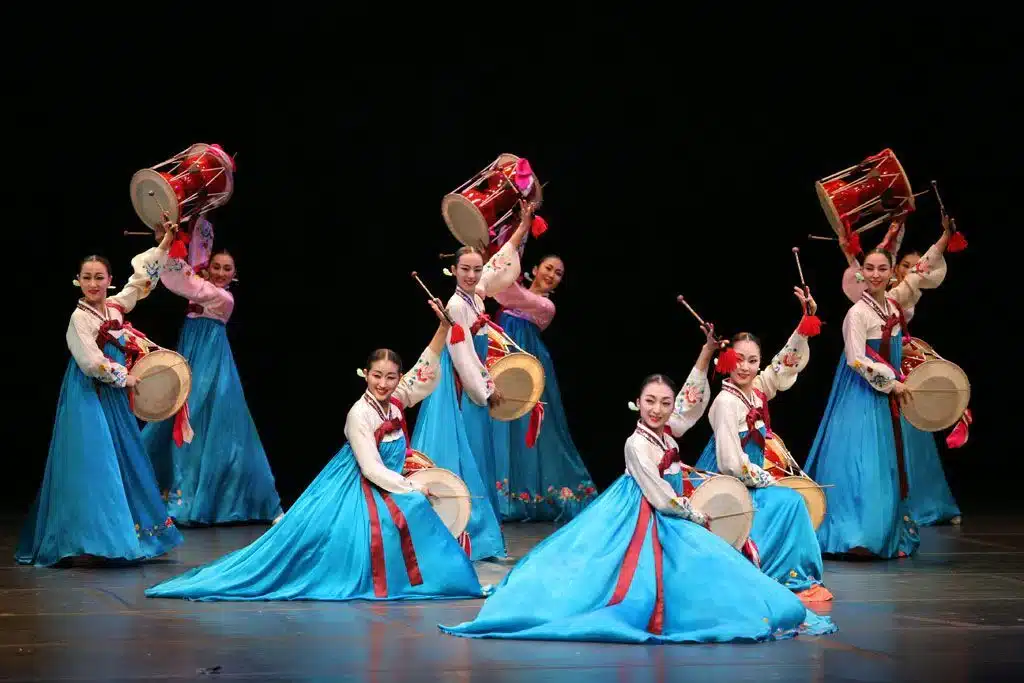
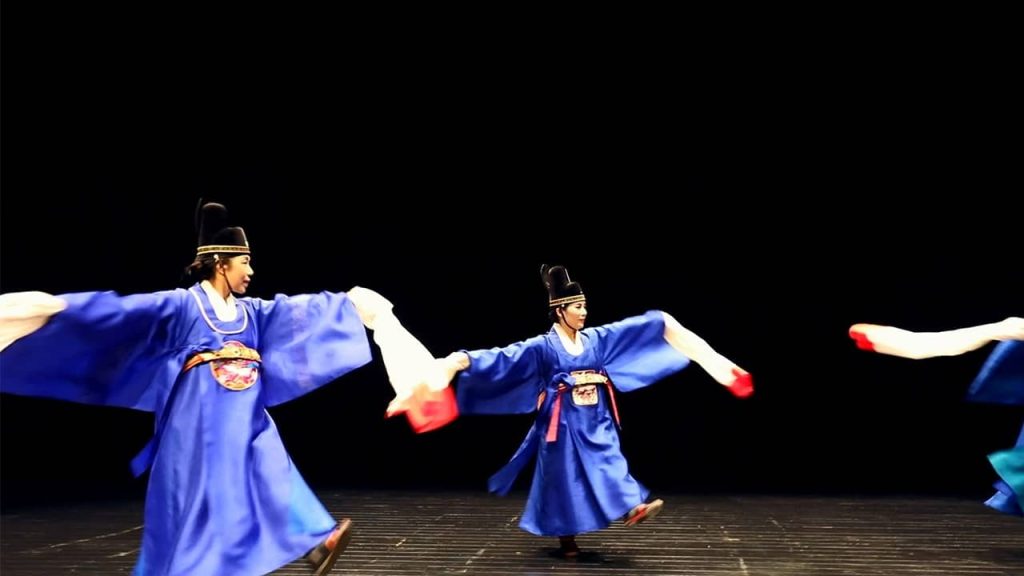
Another popular type of traditional Korean dance is the drum dance, which is performed by male dancers using traditional Korean drums called janggu. The drum dance is known for its rhythmic beat and lively movements, and it’s often performed at celebratory events like weddings and harvest festivals.
In addition to these well-known dances, there are many other types of traditional Korean dance, each with its own unique history and cultural significance. Some dances are associated with specific regions or provinces of Korea, while others are performed to honor ancestors or mark important occasions.
Learning traditional Korean dance is a popular activity among locals and tourists alike. There are many dance schools and studios throughout the country that offer classes in traditional Korean dance, and visitors can learn from experienced instructors and even participate in performances. This is a great way to immerse yourself in Korean culture and gain a deeper understanding of the country’s rich traditions.
In recent years, traditional Korean dance has also been adapted for modern audiences, with contemporary dance companies incorporating elements of traditional Korean dance into their performances. This fusion of traditional and modern dance styles has helped to bring Korean dance to a wider audience and has helped to preserve this important aspect of Korean culture for future generations.
Traditional Korean dance is a beautiful and unique art form that offers a window into the rich cultural heritage of South Korea. Whether you’re watching a performance, learning to dance yourself, or simply enjoying the colorful costumes and graceful movements, traditional Korean dance is an essential part of the country’s cultural landscape and an experience not to be missed.
Hanbok is a traditional Korean dress that’s known for its elegant beauty and timeless style. For travelers visiting South Korea, wearing a hanbok is a must-do activity that offers a unique and unforgettable cultural experience. Whether you’re exploring historic landmarks or attending a traditional festival, wearing a hanbok is a fun and memorable way to immerse yourself in Korean culture.
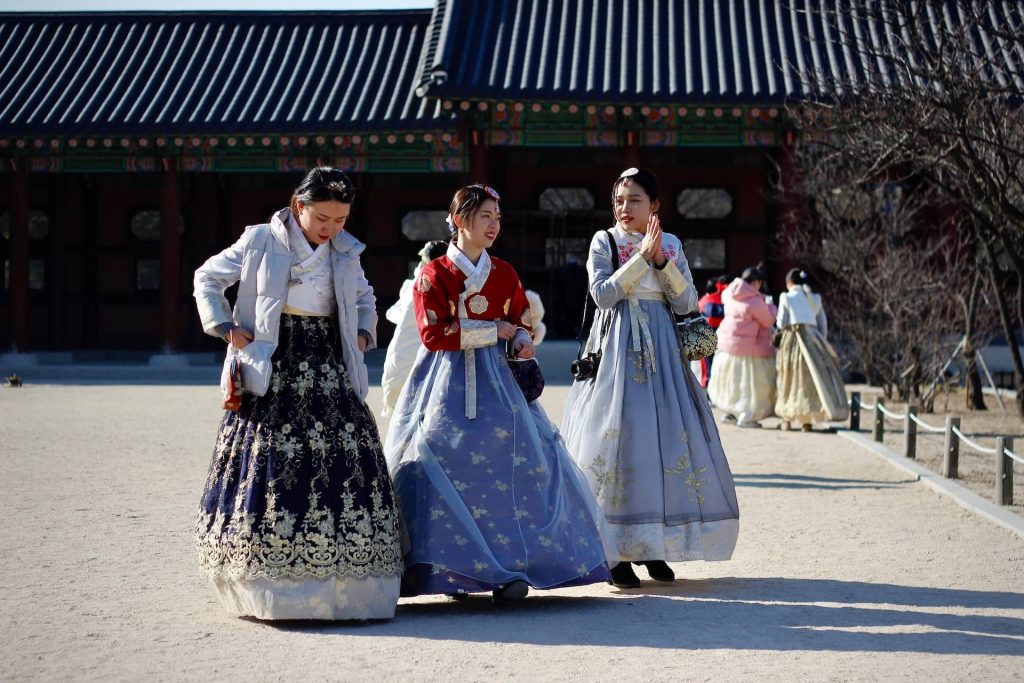
Hanbok has a long and rich history that dates back to the Joseon Dynasty (1392-1910). During this time, hanbok was worn by both men and women and was designed to reflect the Confucian values of modesty and simplicity. Hanbok has evolved over time, with changes in fabric, design, and style, but it remains an important part of Korean culture to this day.
While hanbok is still worn for special occasions like weddings and traditional festivals, it’s also become a popular activity for tourists visiting South Korea. There are many hanbok rental shops throughout the country where visitors can rent hanbok for a day or more and explore the city while dressed in traditional Korean attire.
Wearing hanbok is a fun and unique way to experience Korean culture and to take memorable photos. Visitors can choose from a variety of styles and colors, ranging from bright and colorful to more subdued and elegant. Hanbok can be worn by both men and women, and there are even hanbok rental shops that offer matching outfits for couples or families.
There are many places in South Korea where wearing hanbok is especially fitting. For example, visitors can wear hanbok while visiting historic landmarks like Gyeongbokgung Palace or Changdeokgung Palace, where the traditional dress adds to the ambiance of these historic sites. Wearing hanbok is also popular at traditional festivals like the Jeonju Hanok Village Festival or the Gwangju Hanmadang Festival, where visitors can immerse themselves in Korean culture and traditions.
Hanbok is also a popular choice for visiting traditional markets like Namdaemun Market in Seoul or Jagalchi Fish Market in Busan. The colorful and elegant dress adds to the festive atmosphere of these markets, and it’s a great way to stand out from the crowd while shopping for souvenirs or trying local street food.
Wearing hanbok in South Korea is a fun and unforgettable way to experience the country’s rich cultural heritage. Whether you’re exploring historic landmarks or attending a traditional festival, wearing hanbok adds a special touch to your visit and creates lasting memories. So, if you’re planning a trip to South Korea, be sure to add wearing hanbok to your itinerary – it’s an experience you won’t want to miss!
Sip on a cup of fragrant Korean tea and indulge in the beauty of the traditional tea ceremony. This ancient practice dates back centuries and involves preparing and serving tea to guests in a formal and ritualistic way. Attend a performance at a Korean tea house to learn more about the history and significance of the tea ceremony and to enjoy a traditional Korean tea and snack.
Get ready to immerse yourself in the vibrant energy of traditional Korean markets! These bustling hubs offer a wide range of products, including fresh produce, clothing, and souvenirs. Explore the colorful stalls and indulge in the authentic atmosphere at markets like Gwangjang Market in Seoul, Jagalchi Fish Market in Busan, and Seomun Market in Daegu.
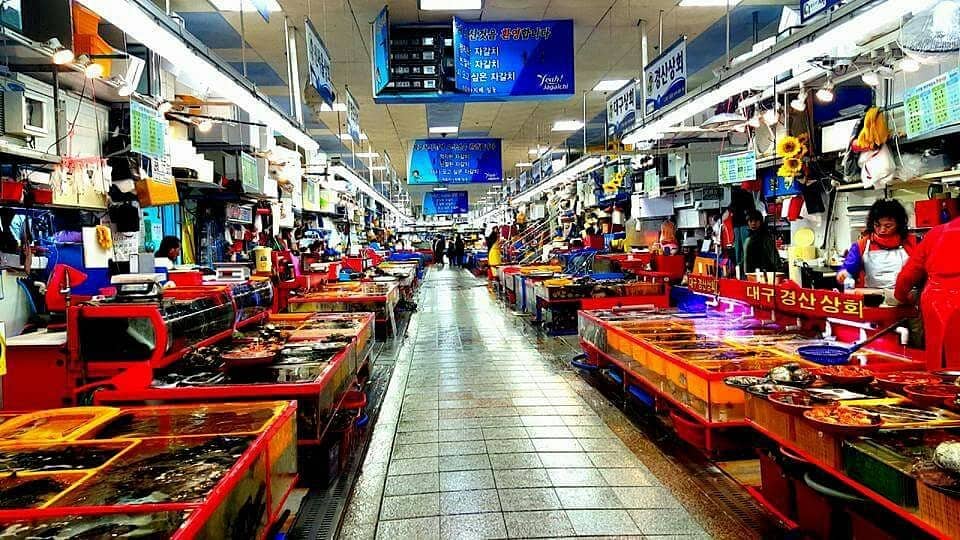
Overall, South Korea is an incredible destination that offers so many unique and joyful cultural experiences. From the energy of K-Pop to the beauty of traditional Korean dance, there’s always something new and exciting to discover in this amazing country!
South Korea’s cultural landscape is rich with festivals celebrating everything from local produce to historical events. The annual Jinhae Cherry Blossom Festival, set against a backdrop of blooming cherry blossoms, attracts millions every spring, offering cultural performances and street food stalls.
Another notable event, the Boryeong Mud Festival, invites participants to enjoy unique experiences involving Mudflats in the coastal town of Boryeong. Activities range from mud wrestling and skiing to live music and fireworks.
The Andong Mask Dance Festival celebrates Korea’s traditional mask dances, bringing together performers from around the world. Here, visitors can attend workshops to learn the art of mask-making and dancing, immersing in Korean heritage.
Attending these festivals not only offers a lively spectacle of Korean life but also provides insight into long-standing traditions and cultural expressions that define the nation’s heritage.
Korea’s festivals are not limited to grand celebrations; local fairs too are imbued with charm. The Hwacheon Sancheoneo Ice Festival, held during winter, invites visitors to engage in ice fishing, sledding, and cultural performances on a frozen river. This festival showcases the community spirit bound within traditional pastimes.
In the fall, the Jinju Namgang Yudeung Festival captivates with countless illuminated lanterns drifting across the Namgang River, each telling a story, offering wishes or serving as tributes. Traditional dancing, music, and firework displays reflect the rich tapestry of Korean folklore, interwoven with contemporary creativity.
Korea Seasons of Life Festival, known locally as the Gaesong Daeboreum Fire Festival, concludes with a spectacular bonfire that lights up Jeju’s night skies, symbolizing new beginnings and cultural unity. These events attract countless visitors, weaving them into Korea’s cultural fabric, fostering shared memories and fortifying bonds within local communities.
One of the best ways to explore South Korea is to go off the beaten path and venture into the unknown. From traditional villages to hidden gems, there are plenty of non-touristy activities to try in South Korea. Take a stroll through Bukchon Hanok Village, bask in the traditional aura of this village and explore the unique architecture of traditional Korean homes.
While South Korea is a popular tourist destination, there are many non-touristy things to do that offer visitors a unique and authentic experience of the country. From exploring hidden neighborhoods to indulging in local cuisine, here are some of the best non-touristy things to do in South Korea.
While neighborhoods like Myeong-dong in Seoul and Haeundae in Busan are popular with tourists, there are many hidden neighborhoods that offer a more authentic glimpse into Korean life. In Seoul, neighborhoods like Seongbuk-dong and Yeonnam-dong are popular with locals and offer unique cafes, restaurants, and boutiques. In Busan, the neighborhoods of PNU and Galmegi-dong are known for their local charm and off-the-beaten-path attractions.
Beyond Seoul’s bustling centre lie neighbourhoods full of local charm offering tranquillity from the city’s hectic pace. Ikseon-dong, one of Seoul’s oldest districts, is lined with hanok houses converted into cafés and boutique shops, where visitors can enjoy a freshly brewed coffee amidst historic architecture.
Yeonnam-dong, nestled near Hongdae’s nightlife, features quiet alleys and independent bookstores. Its creative atmosphere is palpable, attracting artists and musicians. Mangwon, known for Mangwon Market, offers a genuine taste of Korean daily life with market stalls selling fresh produce and delectable street eats.
These neighbourhoods provide a contrasting experience to Seoul’s urban side, showcasing the city’s multifaceted character and offering travellers a richer experience of Korean culture, cuisine, and community spirit. Exploring these areas invites new stories of local life, artisan crafts, and culinary delights unique to each pocket of this sprawling metropolis.
Hyehwa-dong offers visitors a glimpse of art in daily life, its streets decorated with theatres and shaded art spaces like Daehangno, the street of culture, long celebrated for live performance art. As the sun sets, lively performances spill onto streets, transforming the lanes into open-air showcases of artistic effort.
Keep an eye out for unique cafes like the Art Center Café, where every cup comes with a dose of creative expression. Murals and installations express local history and resident artists’ dreams, turning walks into insightful journeys through Korea’s creative spirit.
Another area to explore is the Dongmyo Flea Market, where vintage goods and hidden treasures await amidst narrow lanes, promising adventure and wonder for treasure hunters eager to explore Seoul’s multifaceted identity beyond glossy storefronts.
For those seeking a deeper sense of history, Gye-dong offers a glimpse into the Seoul of old, its streets still lined with the original hanoks, or traditional Korean houses. Here, winding paths lead to quaint teahouses where time seems to have paused, inviting reflection amidst whispered histories.
In Seongsu-dong, previously an industrial zone, cutting-edge cafes and art studios now thrive, enveloped in repurposed factories. This district has become a hub for indie culture and features popular brands like Gentle Monster, which offer experiential shopping journeys.
The Haebangchon neighbourhood, perched on the slopes of Namsan Mountain, is known for its multicultural charm. The area is a favoured haunt for expats, featuring international eateries offering experiments in culinary fusion like Korean-Mexican tacos and Italian Bunsik. Its unique perspective and charming atmosphere provide insight into Seoul’s lively expatriate communities.
These recommendations portray a culture that thrives on eclectic evolution, making Seoul not just a city to see but a place to experience in layers of past and present. Exploring these areas adds depth to the understanding of modern-day Seoul, a city of contrasts and community woven through its layered neighbourhoods.
While traditional markets like Namdaemun in Seoul and Jagalchi in Busan are popular tourist destinations, there are many smaller markets that offer a more local experience. In Seoul, the Gwangjang Market in Jongno is known for its street food and handmade goods. In Busan, the Bupyeong Market is popular with locals for its fresh seafood and traditional Korean snacks.
South Korea is known for its many festivals, from the Boryeong Mud Festival to the Busan International Film Festival. While these festivals can be crowded with tourists, there are many smaller festivals that offer a more local experience. The Jeonju Bibimbap Festival in Jeonju and the Andong Mask Dance Festival in Andong are both popular with locals and offer a unique glimpse into Korean culture.
While Korean cuisine is famous around the world, there are many regional specialties that are less well-known to tourists. For example, the Jeju Island black pork is a local delicacy that is famous for its tender and flavorful meat. In Busan, the ssiat hotteok (sweet Korean pancake with seeds) is a popular snack that’s hard to find outside of the city. Visitors can also try regional specialties like dakgalbi (spicy stir-fried chicken) in Chuncheon or sannakji (live octopus) in Busan.
While the National Museum of Korea and the Seoul Museum of Art are popular tourist destinations, there are many local museums that offer a more unique and off-the-beaten-path experience. For example, the Gyeonggi Museum of Modern Art in Ansan and the Jeju Folklore and Natural History Museum are both popular with locals and offer a deeper insight into Korean culture.
While national parks like Seoraksan and Jirisan are popular with tourists, there are many local parks that offer a more intimate and peaceful experience. In Seoul, the Bukhansan National Park is a popular destination for locals and offers stunning views of the city. In Busan, the Geumjeongsan Mountain is a popular hiking destination that offers a serene escape from the city.
Overall, South Korea offers many non-touristy things to do that allow visitors to experience the country in a more authentic and local way. Whether you’re exploring hidden neighborhoods, indulging in local cuisine, or attending a local festival, there are plenty of opportunities to discover the hidden gems of South Korea.
South Korea is an outstanding destination full of culture, history, and natural beauty. From the ancient ruins of Seoul to the stunning beaches of Jeju Island, there is something here to suit every type of traveler. Whether you’re looking for a relaxed break or an adrenaline-filled adventure, travelling South Korea will not disappoint. No matter how you choose to spend your time in this beautiful country, you’re sure to have a memorable experience.